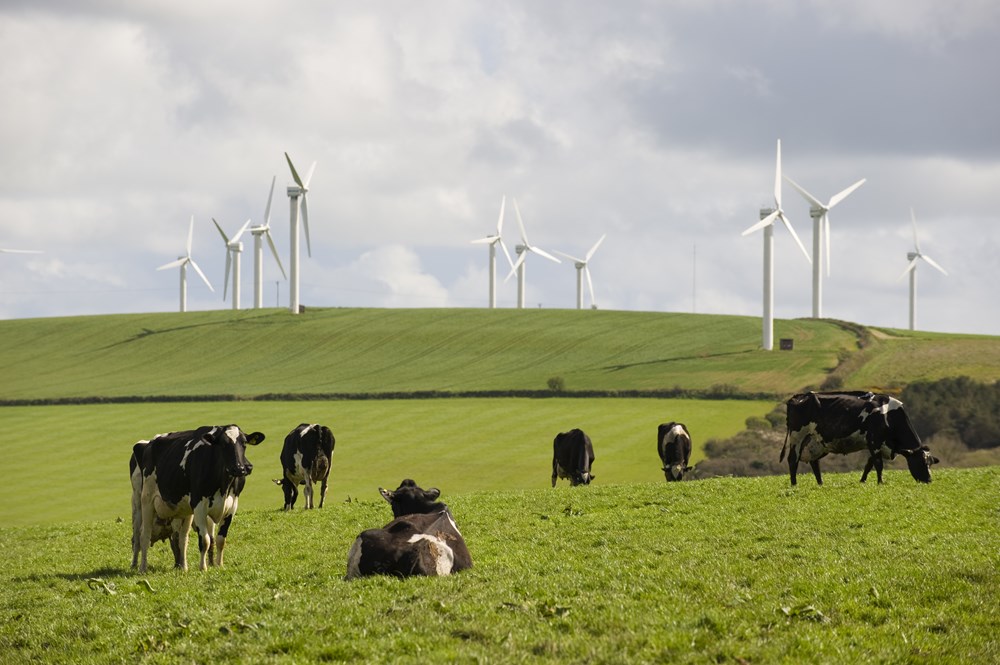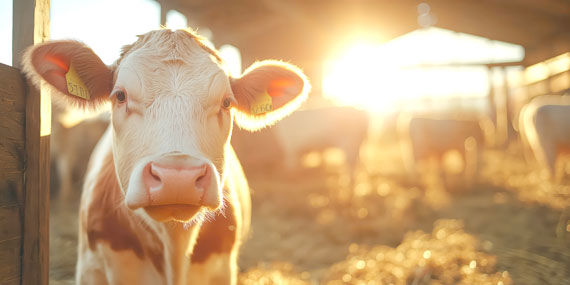
How Brown&Co delivered farmer support at scale to aid sector change
Fri 04 Jul 2025
Hundreds of farmers in England have made positive changes to their businesses thanks to a five-year programme of expert advice and guidance delivered by Brown&Co through Defra’s Future Farming Resilience Fund (FFRF).
The initiative was designed to help farmers navigate the changes brought by England’s agricultural transition.
With input from Brown&Co that has evidently been achieved, according to data gathered by the firm.
It showed that Brown&Co supported over 3,000 farmers over five years and delivered change; 95% committed to some form of change as a result of that support and 72% of these progressed that change within the lifetime of the project.
Capital revenues were generated among 33% and income revenues by 63%.
But it wasn’t only financial benefits that the project yielded – it built both farmer resilience and confidence and also improvements within businesses.
In its delivery approach, Brown&Co helped shape frameworks for change, leaving a strong legacy that it can build on to support farmers through what is a continuing cycle of change that the sector is exposed to.
Adapting farmer support to meet sector changes
Through the FFRF, Brown&Co supported farmers in all regions of England and in all sectors, including cereals, roots, vegetables, dairy, beef and sheep, poultry and other specialist areas.
The demographic reflected the average in the industry with 30% over 65 years and 6% under 35.
The majority had smaller acreages, reflecting Defra’s intention to support businesses most impacted by the loss of the Basic Payment Scheme (BPS) - 30% farmed under 50ha and half 100ha or less.
In the three years that formed the main phase of the programme, Brown&Co delivered 3,103 interventions; 2,670 of these - 86% - were one-to-one and on the farm, while the remainder were achieved through group learning sessions.
There was a consistent theme to the feedback with farmers adamant that on-farm tailored support had been key to building trust and understanding their individual needs.

It was noticeable that the support requested by farmers changed over the course of the project, as the sector adapted to changing market conditions, the changing climate and to transitions in the direction of government policy. In response, Brown&Co adapted its support offer.
Most farmers requested a Business Review, which focused on business finances and operations, family matters, succession planning, and future ambitions within the business. It provided a baseline for more detailed support and direction.
Many progressed to receiving more focused intervention, again evolving over time according to demand. They initially covered greenhouse gas (GHG) baselining, tenant support, detailed financial planning, land and property assessments, natural capital opportunities, and technology adoption. In the programme’s final two years additional interventions were offered in response to emerging business opportunities for farmers and included the Sustainable Farming Incentive (SFI), biodiversity net gain (BNG), woodland carbon, and renewable energy technologies.
All this was delivered by Brown&Co’s in-house teams of land agents, agribusiness consultants, ecologists, and planners, ensuring consistency of delivery and the ability to respond across the full range of support requirements.
Delivery outputs
In the last three years, Brown&Co created 2,544 farm-based action plans, developed jointly with farmers and setting out pathways for consolidation or change. Seventy two per cent of farmers had progressed the plans at the conclusion of the project in February 2025.
The two interventions that had the highest uptake were SFI and business review, accounting for 70% of delivery requests by farmers.
Since the project transcended the three iterations of SFI - pilot, SFI 2023 and the Enhanced offer - and with phased options and rate changes alongside, farmers wanted to take advantage of what was on offer. SFI was the immediate choice of support for many.
On-farm interactions enabled other matters beyond SFI to be shared, creating a mutual understanding of business challenges and opportunities.
Most farmers (69%) indicated that they would be interested in other support options if they became available, indeed that these were needed. Many needs were unfulfilled by the programme because of the strong uptake and its end-point.

What difference did the project make?
As a result of Brown&Co support, 95% of farmers planned to change their businesses, either retracting or expanding, consolidating, diversifying, reducing or increasing productivity, switching enterprises, handing over the business or retiring.
Analysis of the survey conducted at the end of the programme recorded the following changes implemented after the project interventions had been delivered, with percentages indicating the proportion of farmers reporting a positive or planned change.
• The use of key performance indicators (KPIs) within action plans had informed/supported decision making for 67%
• The action plan had been progressed by 72%
• Profitability had increased among 71%
• Efficiencies had been planned by 53%
• Expansion or consolidation is planned by 43%
• Diversifications had increased among 35%
• 43% had started succession planning
• Grant funding had been secured by 34%
• The GHG footprints of 76% had reduced
• Agri-environment income was maximised by 75%
• New technology was adopted by 19%
• New collaborations were initiated by 28%
• Landlord/tenant cooperation was initiated by 25%
• 22% had progressed planning permissions
Surprisingly, only 4% planned to exit the sector – it may be that the lifeline provided by the SFI could have been an influence and the situation may change when schemes end.
Detailed data analysis showed that the support stimulated a more timely delivery of change. Through Brown&Co support, opportunities for changes identified had been completed by 37%, progressed by 48% and not started by 15%. Had the support not been available this would have looked very different with only 8% completed, 34% in progress and 56% not started.
The data highlights the premise that that support hastens change delivery.
Experience would suggest that putting off decisions, particularly around financial or operational matters or succession planning, often narrows the range and effectiveness of potential outcomes.
It was also clear from that analysis that very little change was fully completed within the project duration. Most change occurs over a period of three to five years. The potential to revisit action plans and seek support to facilitate delivery of change over the long term remains an opportunity and legacy of the Brown&Co support.
Had the support not been funded, not all farmers who accessed it said that they would have been either willing or able to fund it themselves, but some would have.
Raw data from Brown&Co’s follow-up survey indicated that if the FFRF support had not been available, 35% of farmers would have paid for it themselves, 47% would have achieved the same result but it would have taken longer or the result would have been of a lower quality, and 16% would not have achieved the result that they did.
Given the current shocks the sector is experiencing, we believe there is a strong case for ongoing support for some farmers. This could be effectively targeted at demographic groups or through focused support, such as succession planning. Without this there is a case, given the enhanced change achieved by many, for farmers to seek professional support themselves.
Change takes time, particularly when there are family generations involved or permanent change. Much of the changes instigated through the support, whilst taken to an early stage within the duration of the project, will not happen or deliver associated benefits until later on. The importance of continuing to support the direction of travel beyond FFRF support will be crucial for many businesses.
Can we monetise the value?
Based on extrapolating from randomised sampling of farmers within the project and the changes they indicated, the capital income potential to be raised or planned as a result of Brown&Co support amounts to £428 million. The catalysts for this are business restructuring, succession-driven change, retirement and BNG sales.
It also shows a £44m annual revenue raised as a result of Brown&Co support, with SFI, budget-driven financial changes and grant income the biggest contributors.
SFI dominated the latter stages of the project. Of those that received SFI intervention support through FFRF and those that then entered SFI as a result, average income per ha was £102/ha compared to the £233/ha it had been through BPS. This showed that on average the new support only amounted to a 43% replacement of the BPS. This will be lower when establishment and management costs are apportioned.

Building on the foundations of FFRF
FFRF has provided a basis for planning change across many farming businesses. The opportunity is to now build on this, to revisit action plans and to progress these.
Without doubt, FFRF enabled a timely uptake of new government initiatives, particularly SFI and other grant schemes. These are time limited, and many well end in their current form within the next two years. At this point, or before, farmers will need to review their businesses in preparation for another change in government support, potentially at a lower level for most. The actions plans within FFRF will have captured many of the areas to address and focus on. It might be argued that SFI in some part took the pressure off a need to focus on these other areas. Now is therefore the time to re-prioritise.
The core farming areas to now focus on include:
• Succession planning. Recent Government announcements should encourage all farmers over 55 to proactively understand their inheritance tax (IHT) liabilities and options. Having no plan is no longer an option.
• Business finances. Depressed grain market prices and the lack of rain from February to May 2025 looks set to depress harvest returns. Ensuring that finance arrangements are planned in advance and business risks are minimised will become increasingly important for some. Acting sooner while control remains is key.
• Diversification. Linked with planning reforms and a push for renewable energy, diversification presents opportunities for many. It can be complex and slow to develop. Effective support is key.
• Exiting farming. The hurdle of re-engaging post-SFI may present opportunities for farmers to consider sale, enact a succession plan, enter share or contract farming agreements or natural capital-based options. These all have a lead-in time of at least 12 months.
For many of the 3000 farmers Brown&Co worked with in the project all of these will have been a topic of discussion. Now could be the time to revisit and re-engage.
Keep updated
Keep up-to-date with our latest news and updates. Sign up below and we'll add you to our mailing list.
 Brown&Co
Brown&Co

